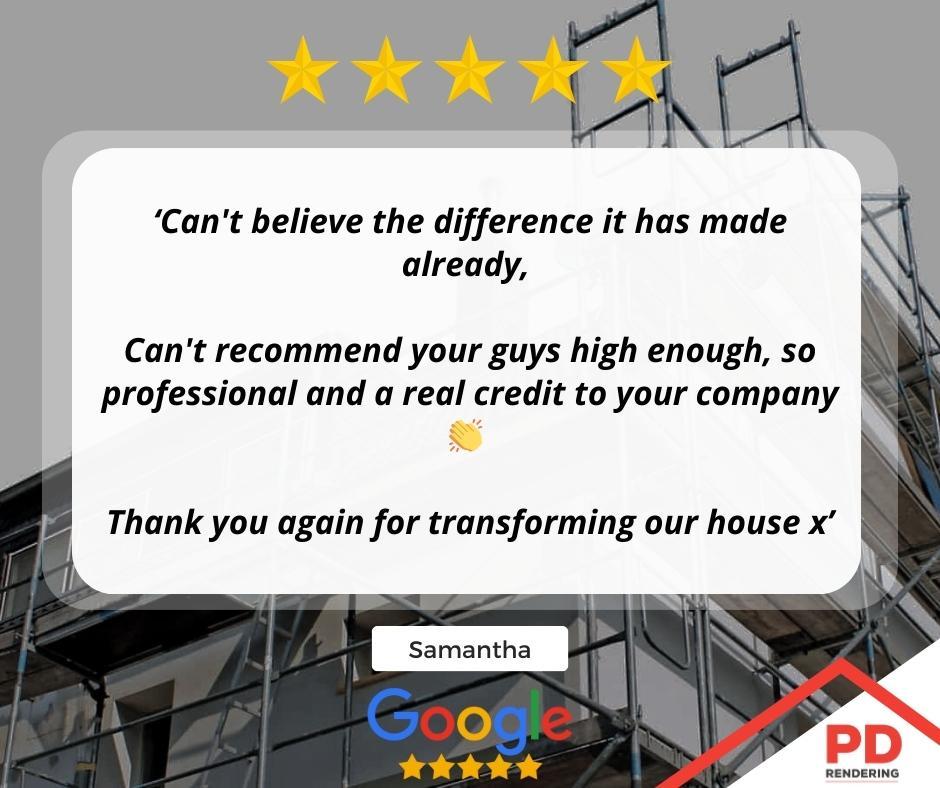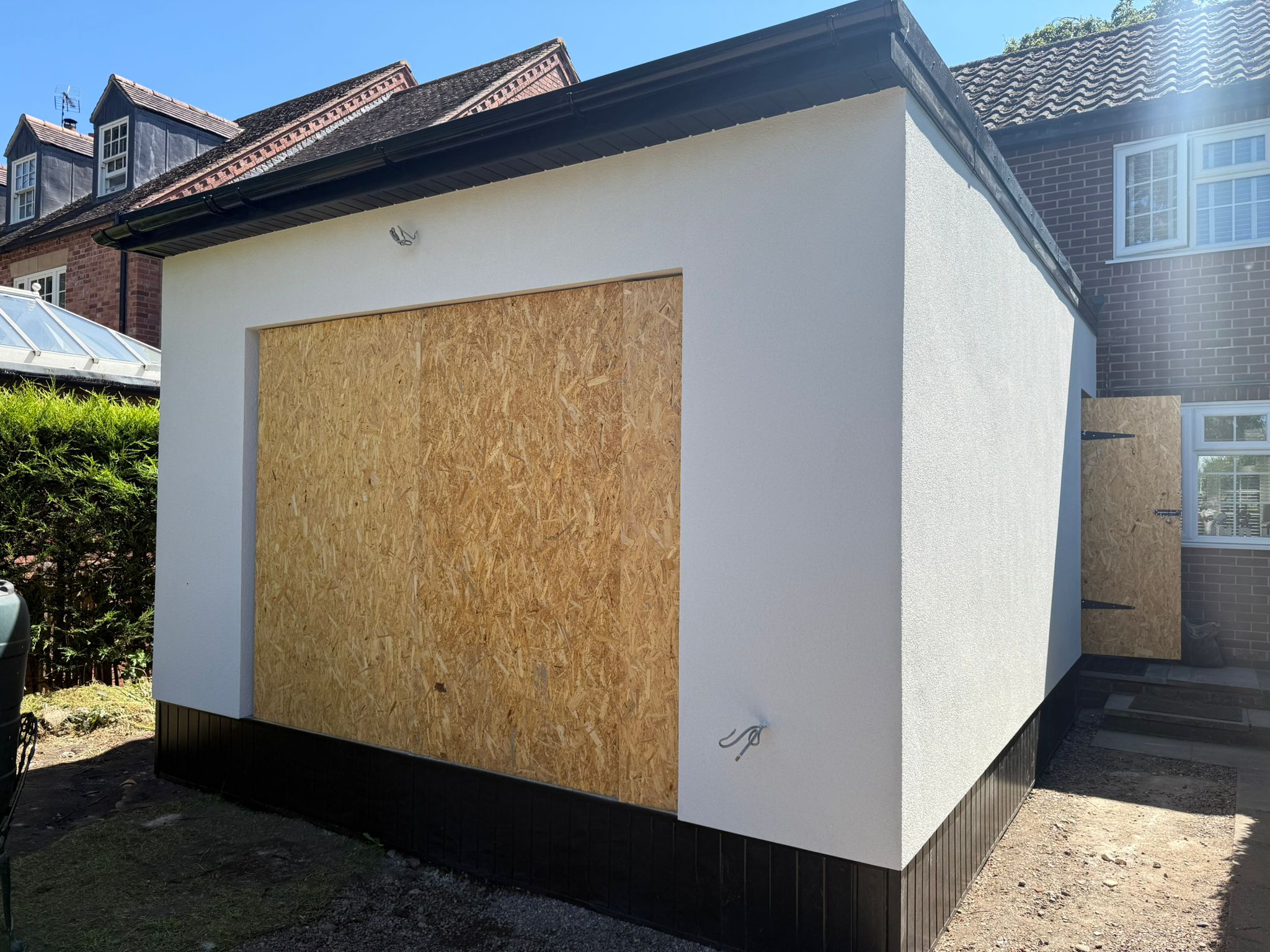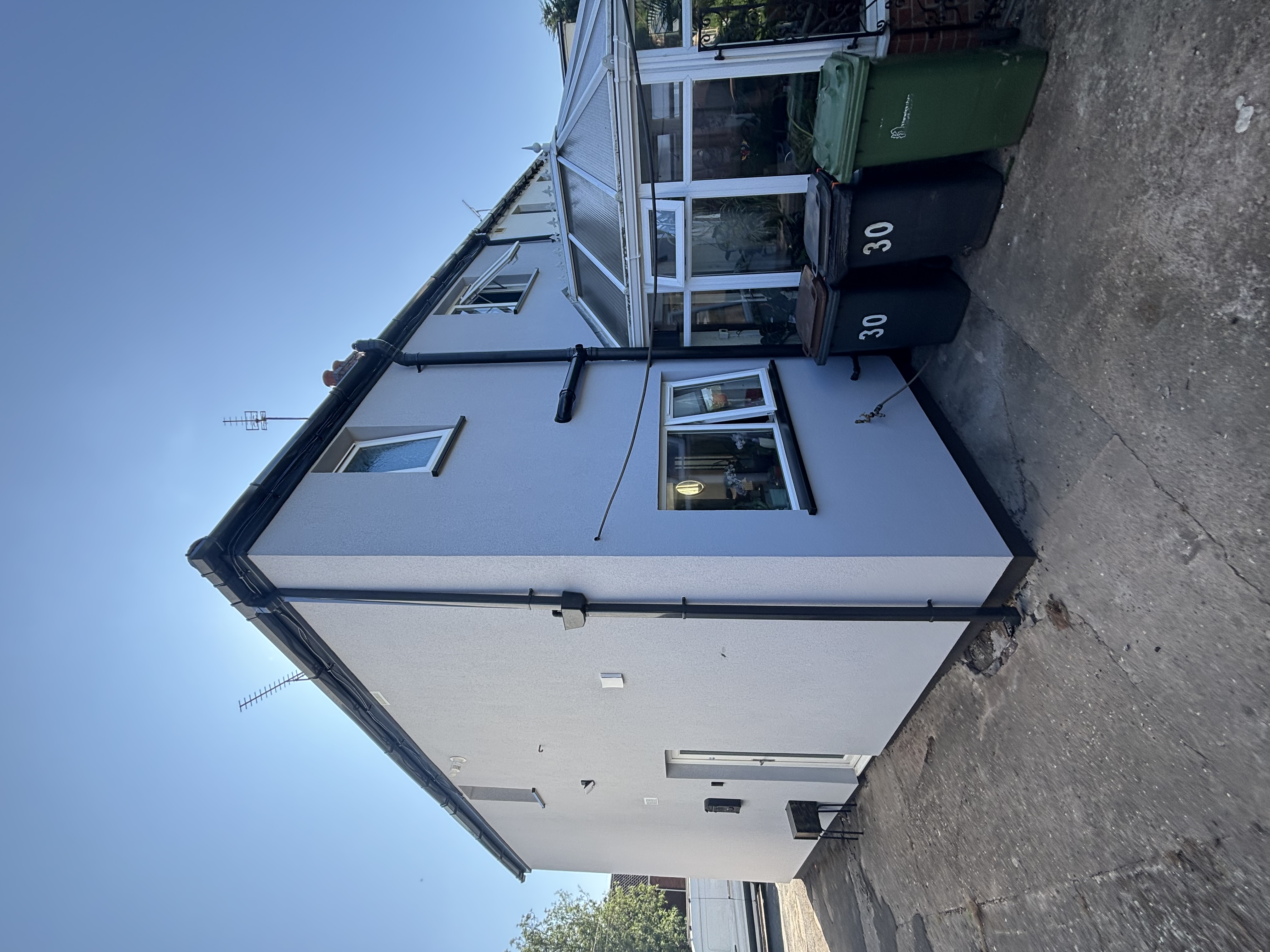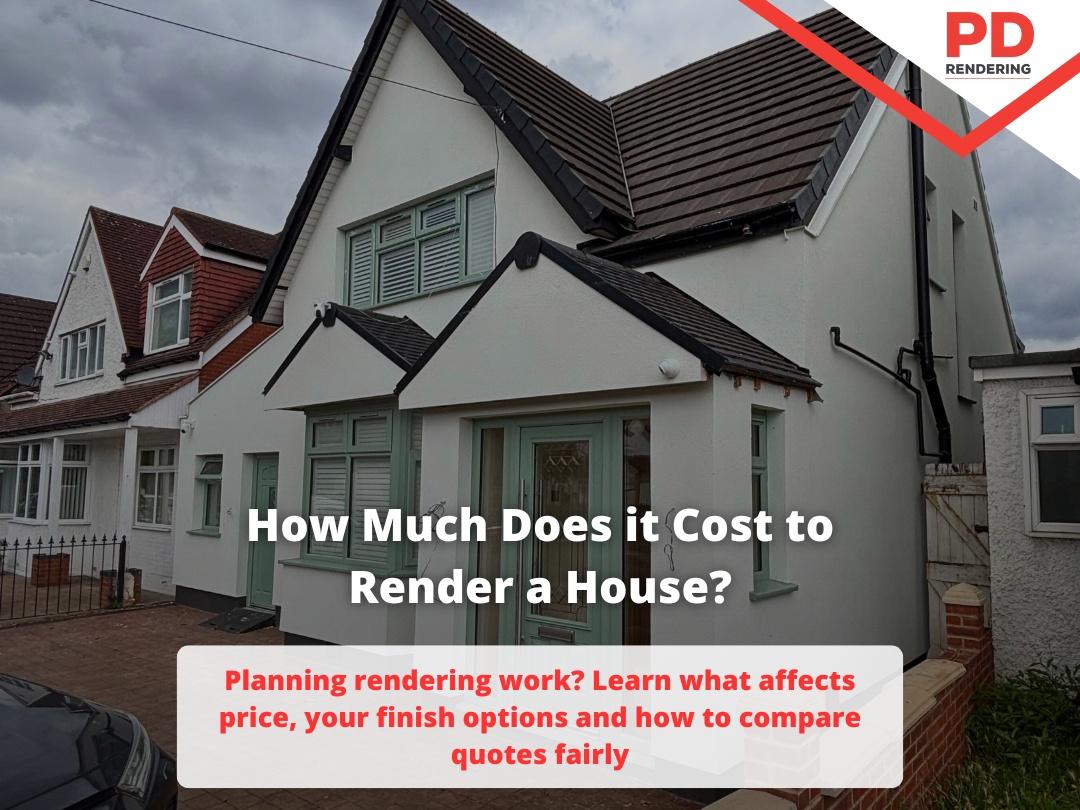
How much does it cost to render a house? If you’re planning to render your home, knowing what a fair price looks like is essential. This blog explains what drives the cost, from property size, and access to the system and finish you choose, and the difference between render-only and external wall insulation (EWI). We also cover silicone render cost per m2 and what is usually included in a quote. By the end, you will know how to compare quotes properly and pay the right price for the right job.
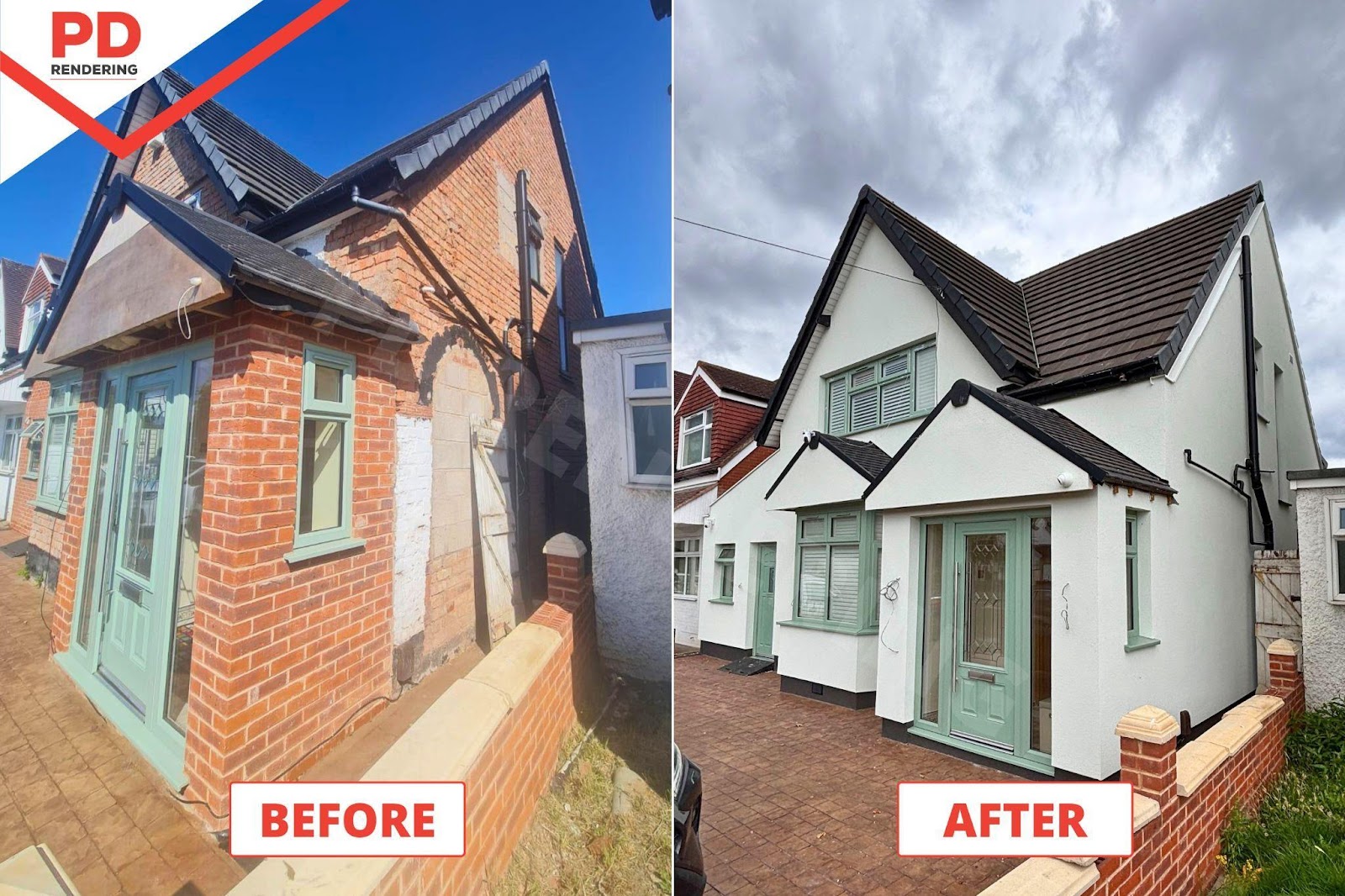
House rendering is a protective and decorative coating applied to external walls. It creates a clean, fresh finish while shielding brickwork from rain, wind and frost, helping the exterior stay in good condition for longer.
A fresh render can transform the look of a property by covering tired brickwork, smoothing out minor surface defects, and improving kerb appeal. There are several systems you’ll come across:
Important: Before any render is applied, the walls should be sound, clean and dry. Any issues with damp or movement need to be fixed first, otherwise they can show through and spoil the new finish.
Render-only
Applies a new protective finish and fresh appearance to your walls. It improves weather resistance but doesn’t add significant insulation or change the wall’s U-value. Best suited if your home already has insulation (such as cavity wall fill) or you simply want to refresh the exterior.
External wall insulation (EWI)
Involves fixing insulation boards to the outside of the property, then covering them with a reinforced basecoat and render. This boosts thermal performance, cuts cold spots and helps reduce heating demand. The walls become slightly thicker (usually 60–200 mm depending on insulation type), but you gain both energy savings and a modern finish.

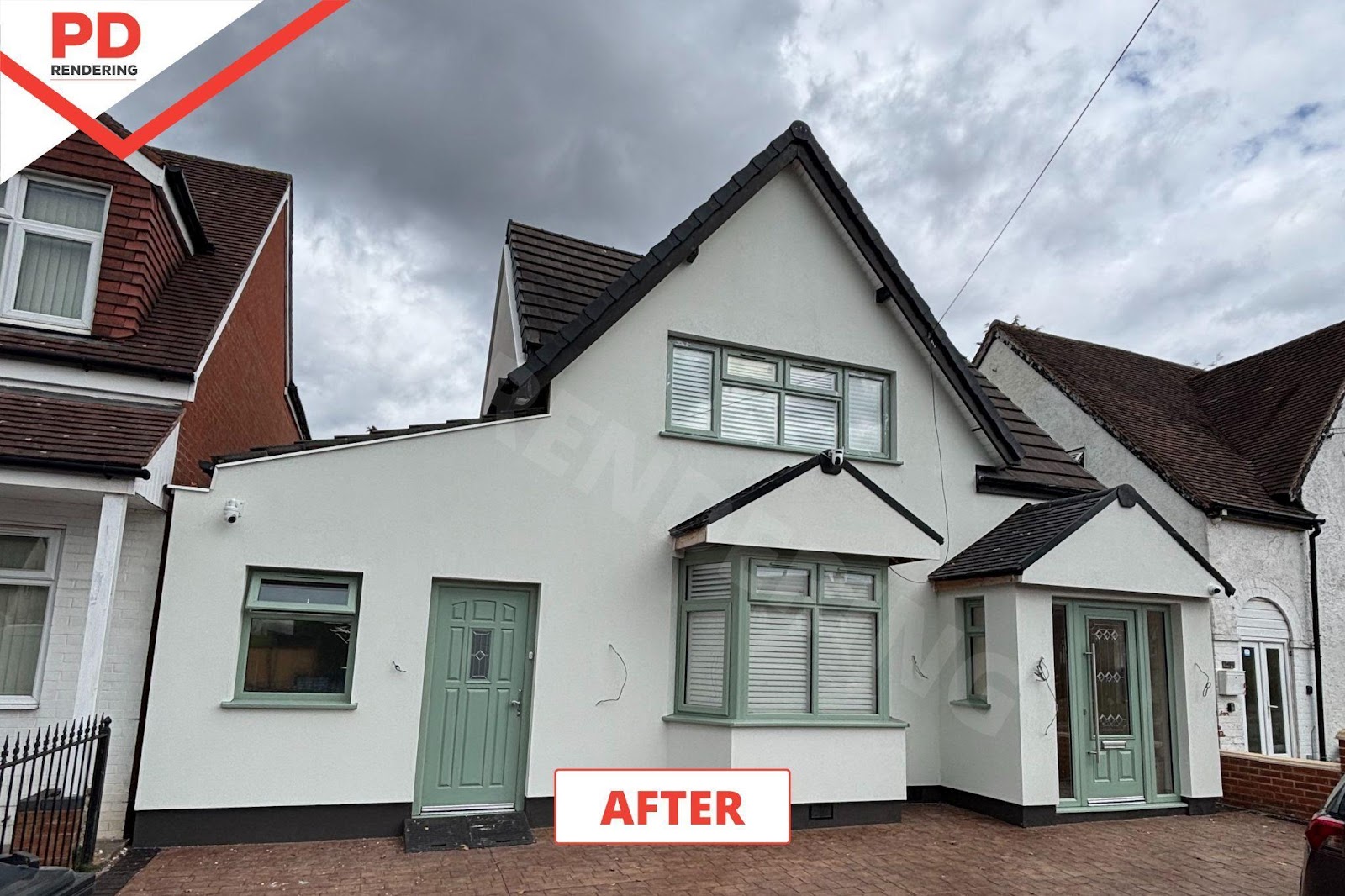
The price of rendering depends on a few key factors: the size of the walls, access and scaffolding, how much prep is needed, and the system and finish you go for.
As a guide, a typical three-bed semi will usually come in somewhere between the mid-thousands and around £10,000 for three elevations in silicone render, depending on scope and prep. Larger detached homes with more wall area can be higher. These figures are only for guidance: access, preparation, and detailing can all shift the total up or down.
Total wall area, the number of storeys and how easy it is to reach each elevation have the biggest impact on the final price. Two-storey homes usually need full scaffolding. Terraced properties may require pavement licences if scaffold or hoarding sits on the public footpath, and rear access can be tricky.
Tight side passages, conservatories, extensions and outbuildings add time too. Always check whether scaffolding, permits and waste removal are included in the quote. Larger homes with more wall space naturally use more materials and labour.
Older homes often need preparation before any new finish goes on. This can include removing blown render, removing pebbledash, treating algae and repairing cracks.
Additionally, any damp issues must be fixed first; rendering over moisture or movement problems only masks the symptoms and risks a short lifespan. More prep means more labour, materials and waste to dispose of, which increases cost.
The render system you choose has a big impact on the final cost.
As explained earlier, there are traditional thick-coat systems, modern thin-coat silicone systems, and lime render for older homes, each with different labour times, material prices and suitability.
If you’re adding external wall insulation (EWI), the type of insulation board also plays a role. Options include EPS, mineral wool or phenolic foam, each with different thermal properties, fitting times, and costs.
It’s not just the walls. A proper rendering job includes lots of smaller details that can affect both the look and the cost, and they’re easy to overlook in a quote.
Things like corner beads, mesh and movement joints help keep the render strong and crack-free. Around windows and doors, the render often needs shaping or finishing touches like new cills or reveals to make everything neat and weatherproof.
Pipes, cables, satellite dishes, alarms and meter boxes may also need to be temporarily removed and refitted. And if you’re planning to update fascias, soffits or gutters, make sure everything is timed properly so the new render and roofline work together.
Scaffolding is often charged weekly and can take up a large part of the budget, especially for two-storey homes or properties with tricky access. If your home is on a public road, you may also need a pavement licence. Don’t forget to factor in skip hire, waste removal, and protective sheeting to keep the site clean and safe. Longer projects or restricted access will naturally increase these costs.
The time of year can affect both the cost and timeline of your rendering project. Cold or wet weather slows down curing times, which can lead to longer scaffolding hire and extended labour. Local factors like labour rates, travel distance, parking restrictions, and availability also play a role in the final cost. Planning ahead and choosing the right time of year can help avoid delays and unexpected expenses.
In 2025, most UK homeowners can expect silicone render to cost between £65 and £80 per m², including labour and standard materials. The final figure depends on access, surface preparation, detailing, and even the time of the year. Every home is different, so the price will always reflect the specific needs of the property. Treat this as a guide price range, rather than a fixed quote.
What this usually includes:
What’s often excluded from the m² rate:
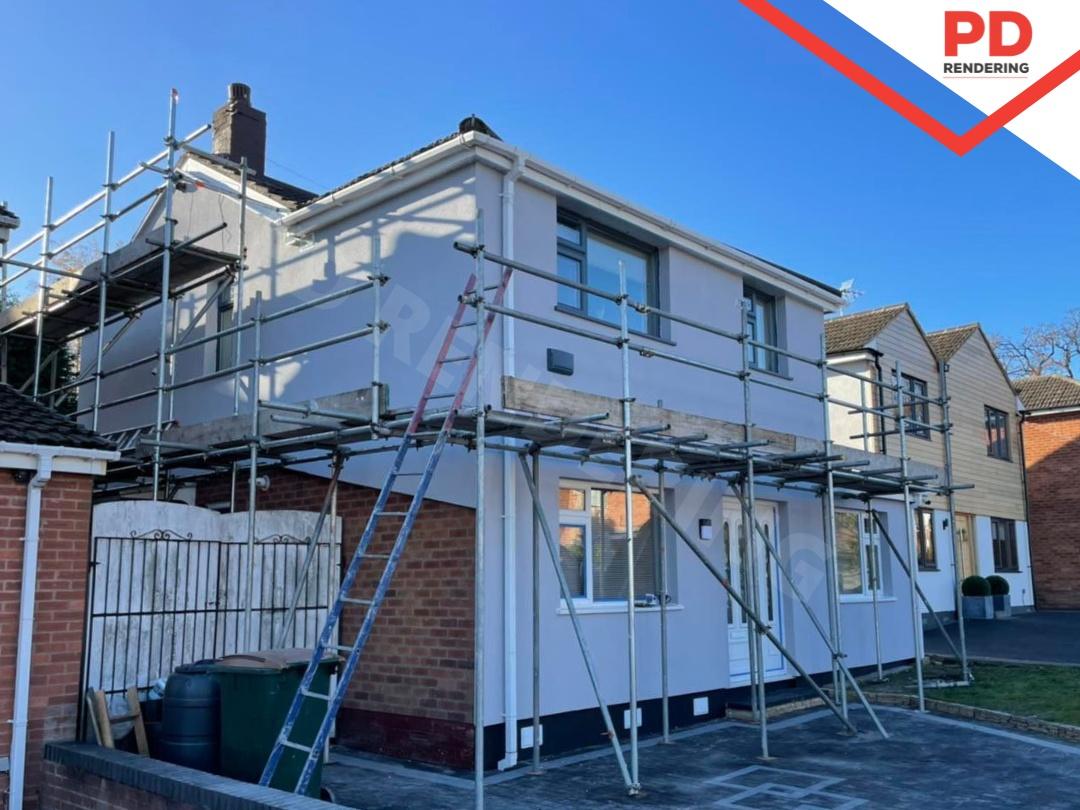
With good weather and straightforward access, rendering a house can be quicker than you might expect. Here’s a rough guide based on typical property types:
These are general estimates. The actual timescale can vary depending on preparation work, access issues, the rendering system used, weather conditions, and even the size of the installation team.
For accurate pricing tailored to your home, it’s always best to speak with a trusted local rendering specialist. When comparing quotes, make sure each contractor is quoting for the same scope of work, render system, and finish, otherwise, it’s not a fair comparison.
Check exactly what’s included and what’s not. Look for details like scaffolding, preparation, waste removal, and who provides the warranty. Clear timelines, experience, and recent customer reviews are just as important as the final price.
Remember, rendering is an investment in your home. A high-quality finish adds lasting protection, better kerb appeal, and potential savings on energy bills, making it well worth doing right the first time.
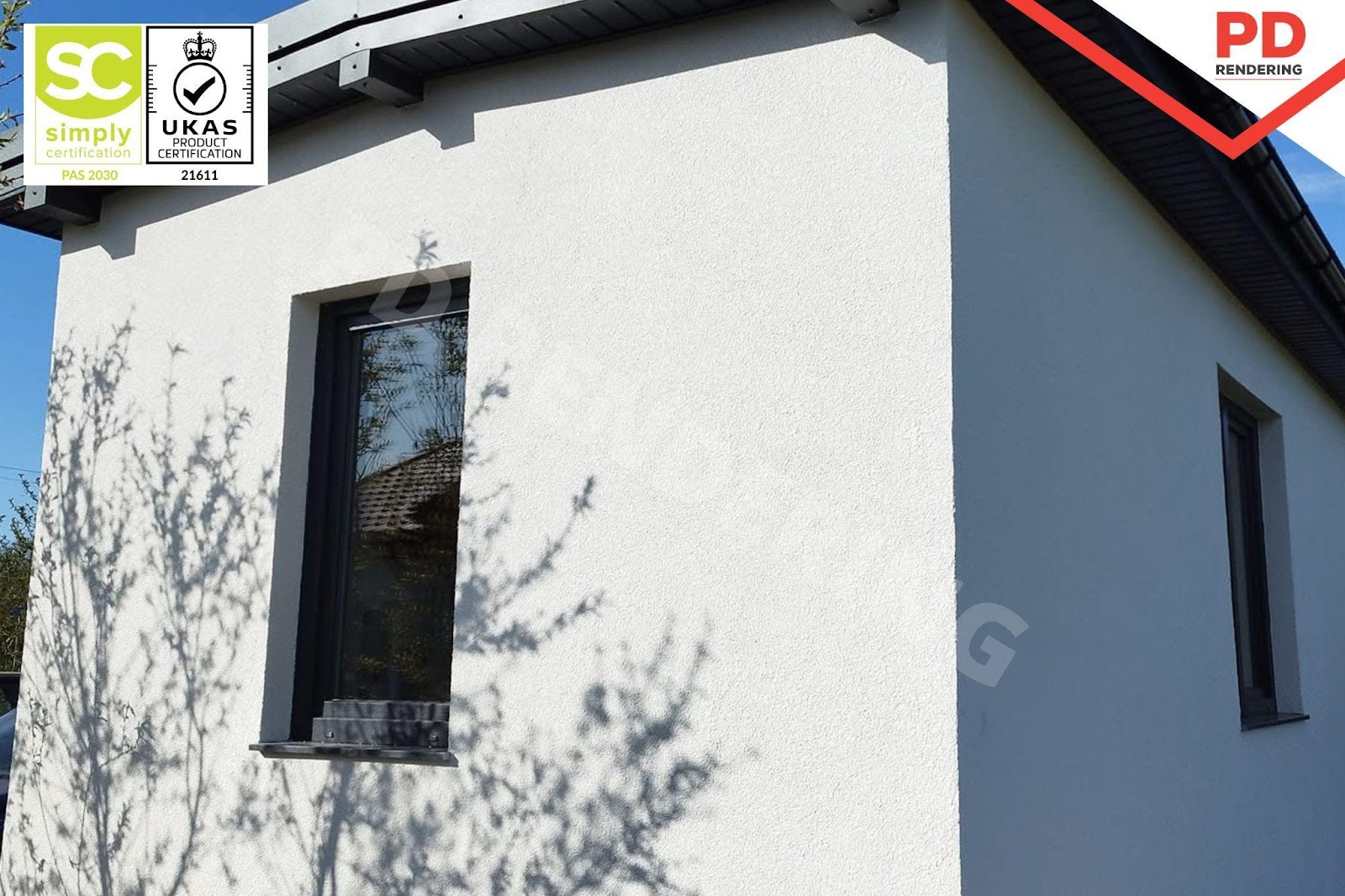
Ready to get started?
At PD Rendering, we have over 15 years of experience and are proudly TrustMark-registered.
Based in Coventry, we serve homeowners across the Midlands and parts of southern England, including Birmingham, Leicester, Nottingham, and London.
Get in touch for a free, no-obligation consultation. Use our contact form to get started or call us on 02475 314 286.
